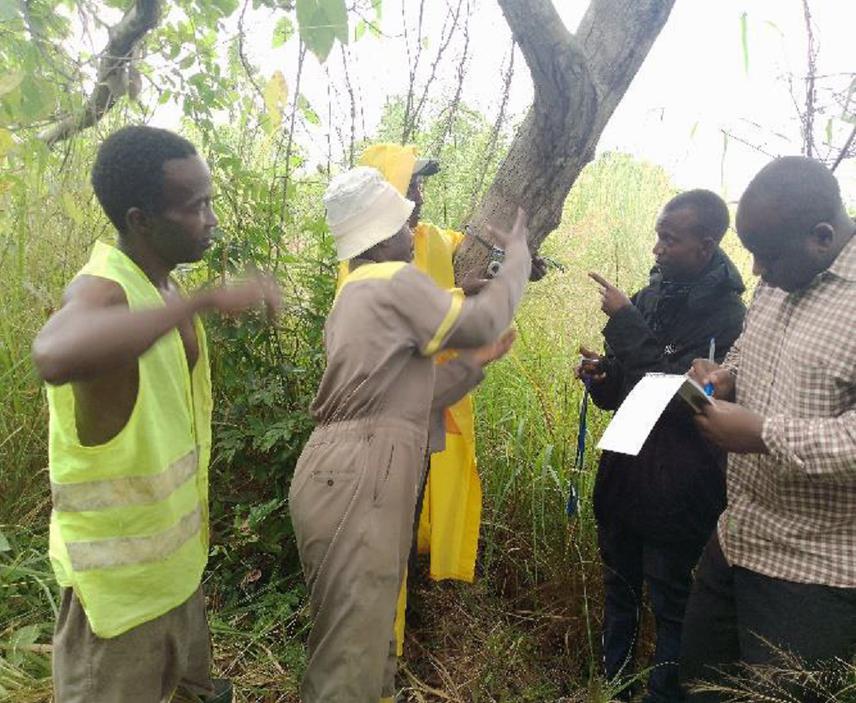Beatus Mwendwa
Uzungwa-scarp forest reserve form part of the Eastern Arc and Coastal Forests of Tanzania and Kenya. The reserve is a reservoir of species heritage in Tanzania and the world at large hosting rare, endemic and endangered flora and fauna. It covers the steep east of Udzungwa Mountains which and is known for its exceptional, universal and outstanding biodiversity value. The reserve is a home to 221 (40%) of the 554 plant taxa and 46 (34%) of the 136 vertebrate species endemic to the Eastern Arc Mountains (TFCG, 2017) including the endangered Udzungwa Red Colubus (Piliocolobus gordonorum), Abbot’s Duker (Cephalophus spadix), Sanje mangabey (Cercocebus sanjei) and remarkable herpetofauna species such as Kihansi Spray toad (Nectophrynoides asperginis).

Project team making sample plots during forest vegetation survey.
Despite of being exceptionally rich in biodiversity, Uzungwa-scarp Forest reserve biodiversity is under heavy pressures for bush meat hunting, timber and fuel wood extraction. Study by Rovero et al (2010) reported that hunting practices for local markets and household consumption is the greatest threat to biodiversity in the forest reserve. Another study by Channinf (2006) reported a continuing anthropogenic disturbances and illegal activities related to timber production and trade, collection of firewood, charcoal pits, poaching, bush-meat hunting and small-scale agricultural encroachment, hence calling for immediate collaborative conservation efforts.
To save the endangered Abbott’s duiker from local extinction and conserve ecological habitat of the Uzungwa-scarp forest reserve, the project will monitor the current population size and distribution of the endangered Abbott’s duiker using camera trap survey. The method is ideal for assessing elusive mammals such as Abbot`s duiker, which is reported to be extremely secretive species, very rarely seen and appears to be mainly nocturnal and crepuscular (IUCN, 2013). Using high-resolution WordlView-2 satellite imagery we will perform forest vegetation cover trajectories between 2010 and 2019, and produce maps and statistics indicating areas converted from forested to grass/shrub and bare land.
Unmatched Count Technique (UCT) will be used to quantify the scale and reasons for bushmeat hunting-a key threat facing endangered Abbot’s duiker and other forest mammals in the Uzungwa-scarp forest reserve. Published and disseminated project findings will contribute to highlighting and mapping forest regions that provides fundamental niche for endangered Abbott’s duiker and contribute on the conservation of endangered forest mammals and forest habitat.